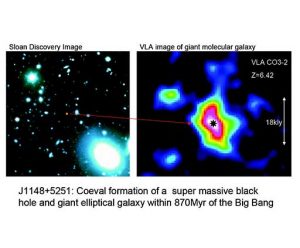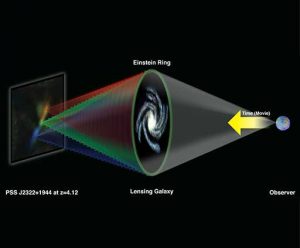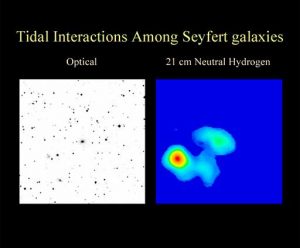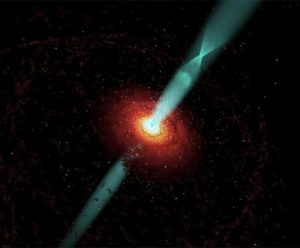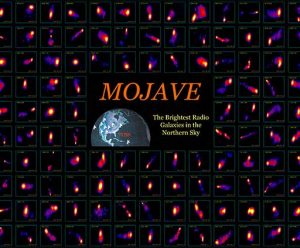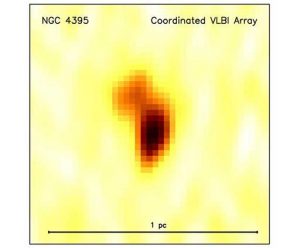Astronomers may have solved a cosmic chicken-and-egg problem — the question of which formed first in the early Universe — galaxies or the supermassive black holes seen at their cores.
Cosmic Lens Reveals Distant Galactic Violence
By cleverly unraveling the workings of a natural cosmic lens, astronomers have gained a rare glimpse of the violent assembly of a young galaxy in the early Universe.
Radio Telescopes Reveal Unseen Galactic Cannibalism
Radio-telescope images have revealed previously-unseen galactic cannibalism — a triggering event that leads to feeding frenzies by gigantic black holes at the cores of galaxies.
Radio Telescope Reveals Secrets of Massive Black Hole
At the cores of many galaxies, supermassive black holes expel powerful jets of particles at nearly the speed of light.
VLBA Movies Reveal New Details of Cosmic Jets
Astronomers have known for decades that supermassive black holes at the cores of galaxies can shoot out jets of subatomic particles at tremendous speeds.
Radio Telescopes Provide Key Clue on Black Hole Growth
Astronomers have discovered the strongest evidence yet found indicating that matter is being ejected by a medium-sized black hole, providing valuable insight on a process that may have been key to the development of larger black holes in the early Universe.






